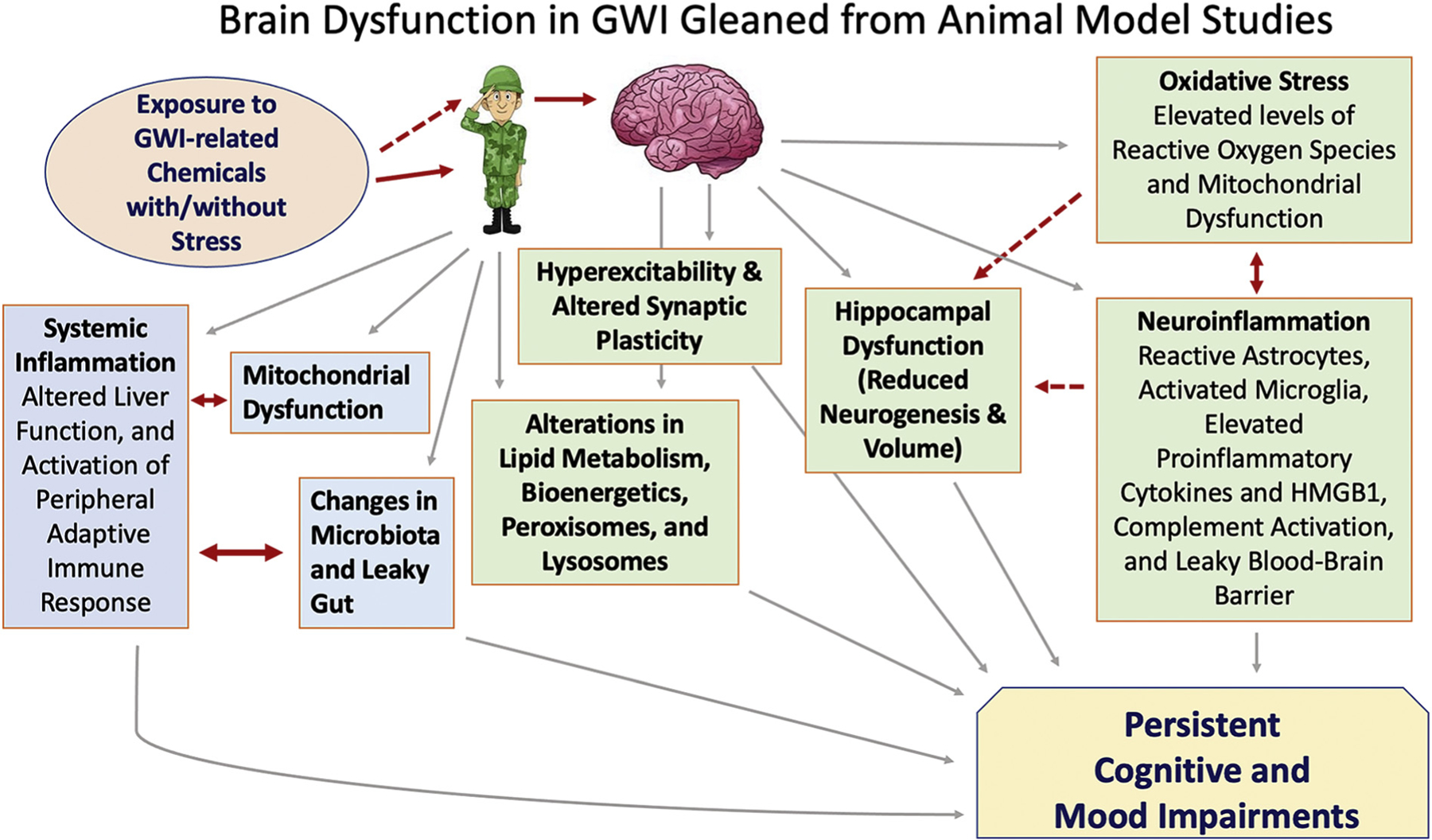Fig. 1.

A schematic illustrating the potential mechanisms causing brain dysfunction in Gulf War Illness (GWI) as gleaned from animal model studies. Systemic changes caused by the exposure to GWI-related chemicals have been mostly correlated between animal models and GWI patients (solid red line). These include activation of the peripheral adaptive immune response and alterations in lipid metabolism, bioenergetics, peroxisomes, lysosomes, liver function, mitochondrial function, microbiome, and leaky gut. Animal model studies also suggested that such exposures could directly affect the brain of veterans (indicated by a dotted red line), which may result in neuronal hyperexcitability and altered synaptic plasticity. Furthermore, both direct and indirect effects of exposures likely underlie persistently increased oxidative stress and inflammation in the brain, which could lead to a leaky blood-brain barrier, reduced hippocampal neurogenesis, and cognitive and mood impairments.HMGB1, high mobility group box-1.
